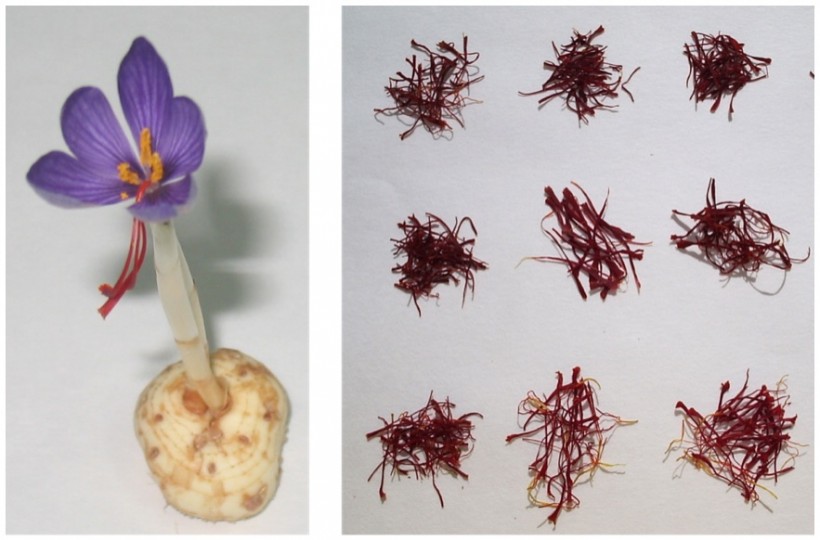Summary
Saffron (Crocus sativus) is one of the most valuable crops worldwide due to its stigmas, widely used as spice, medicinal drugs, and food additives. These stigmas are characterized by the accumulation of three major carotenoid derivatives – crocetin glucosides, picrocrocin, and safranal – which are responsible for the unique colour, bitter taste, and aroma of saffron. C. sativus blooms only once a year and the flower remains open for only a few days and is harvested by hand. The stigmas are separated by hand, sorted and dried. The number of flowers and the size and colour of individual stigmas obtained from each flower influence quality of saffron. Between 120,000 and 200,000 flowers are needed to produce 1 kg of dried saffron stigma threads, which equates to 370-470 h of work. Consequently, the process is very labour-intensive as well as risky since it is highly dependent on environmental conditions, overall leading to high costs, and restricting the commercial utilization of saffron in other sectors. Nowadays, the production of saffron in Europe needs a modernization to increase the yield and the quality of the spice as well as to implement new production systems, which require a biotechnological approach. Thus, the main goal of APOCROMICS is to comprehensively search for relevant genes involved in apocarotenoid biosynthesis and regulation in Crocus through comprehensive transcriptome and metabolome profiling. The research carried out so far in saffron has allowed an extensive knowledge of the carotenoid biosynthesis during the development of the stigma. However, the key enzyme/s for apocarotenoid biosynthesis and modification in saffron, responsible for crocetin and picrocrocin formation, have not been identified and practically nothing is known about the regulation of this class of enzymes in plants and when and how the resulting apocarotenoids are transformed and stored in the different tissues, cell types and in the different cell compartments. With this project, we expect to identify structural genes and transcription factors naturally acting as master regulators of these processes, which are expected to be excellent candidates for modifying in plants the content of carotenoids and apocarotenoids, which owing to their health-promoting effects add nutritional value to the plant-derived foods that contain them.


